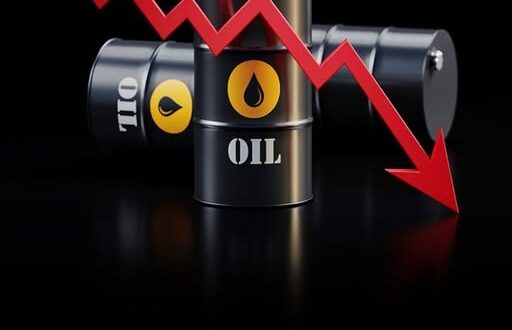The global oil market experienced a dramatic downturn on Friday, with prices plunging by 8%—marking the lowest level since the peak of the COVID-19 pandemic in 2021. This sharp decline has sent ripples through financial markets and raised concerns about the broader economic implications.
Reasons Behind the Oil Price Drop.
The recent decline in oil prices can be attributed to several factors:
1. Global Economic Uncertainty: Fears of an economic slowdown, particularly in major economies like the United States and China, have dampened demand for oil
. Concerns over inflation, interest rate hikes, and sluggish economic growth have contributed to reduced energy consumption.
2. OPEC+ Decisions: The Organization of the Petroleum Exporting Countries (OPEC) and its allies, collectively known as OPEC+, have struggled to maintain stability in the oil market.
Recent reports suggest that key oil-producing nations may not enforce production cuts aggressively, leading to oversupply concerns.
3. Increased Supply from Non-OPEC Countries: Countries outside OPEC, such as the United States, have ramped up oil production. The surge in U.S. shale oil output has further added to global supply, exerting downward pressure on prices
.4. Geopolitical Factors: Geopolitical tensions, including conflicts in the Middle East and sanctions on oil-exporting countries, have historically influenced oil prices.
However, despite ongoing tensions, the market appears to be reacting more to economic concerns rather than geopolitical risks at this moment.
Market Reactions and Economic Implications
The sudden drop in oil prices has had widespread effects on global markets. Energy stocks have taken a hit, with major oil companies seeing declines in their share prices.
Meanwhile, lower oil prices could provide some relief to consumers and businesses struggling with high inflation, as cheaper fuel translates to lower transportation and manufacturing costs.
However, oil-exporting nations, particularly those heavily reliant on crude revenue, may face economic challenges.
Countries like Saudi Arabia, Russia, and Venezuela could see reduced government revenues, potentially impacting public spending and economic stability
What Lies Ahead for the Oil Market?The trajectory of oil prices will depend on several key factors in the coming months:-
OPEC+ Policy Adjustments:
If OPEC+ decides to cut production further, it may stabilize prices.-
Global Economic Trends:
A stronger-than-expected recovery in major economies could boost demand and drive prices up.-
U.S. Monetary Policy:
Interest rate decisions by the Federal Reserve and other central banks will influence oil demand by affecting economic growth and consumer spending.
The 8% drop in oil prices signals growing uncertainty in global energy markets. While lower prices may benefit consumers, they also pose challenges for oil-producing nations and the broader economy.
As market conditions evolve, stakeholders must remain vigilant and adapt to shifting economic and geopolitical realities.
 Top Trends Blogs
Top Trends Blogs




